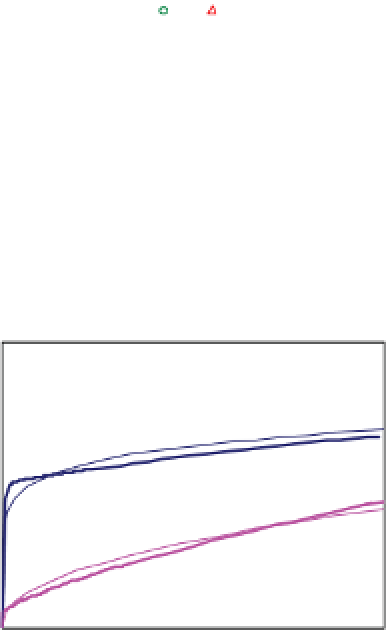Biomedical Engineering Reference
In-Depth Information
500
Bras s
Bras s
Au
A l
Au A l
inpu t
inpu t
re ve rs e ana ly s is
re ve rs e ana ly s is
400
300
200
100
0
0
0.05
0.1
0.15
ε
(a )
400
W -har
de n
ed Cu Ann
e aled
Cu
revers e analysis
W -harde ned Cu Anne aled Cu
revers e analysis
inpu t
inpu t
300
200
100
0
0
0 . 0 5
0. 1
0. 15
ε
(b )
Figure 6-5. Illustration of using plural indenter method to determine material plastic
properties: Good agreement between original input material property and constitutive
properties derived from reverse analysis of numerical experiment. (a) brass, gold and
aluminum which obey the power-law hardening rule; (b) work-hardened copper and
annealed copper with stress-strain curves measured from uniaxial tensile test, who do not
obey the power-law exactly.
curvature of loading curve or loading work). In other words, from one
sharp indentation test on a bulk material, it seems that only two material
parameters (e.g.
σ and
n
) can be measured if the others (
e.g.
E
and
ν
)
are known
a priori
.
78
Thus, there is no one-to-one relationship between
the material properties and the shapes of indentation load-depth curves.
y

























































Search WWH ::

Custom Search